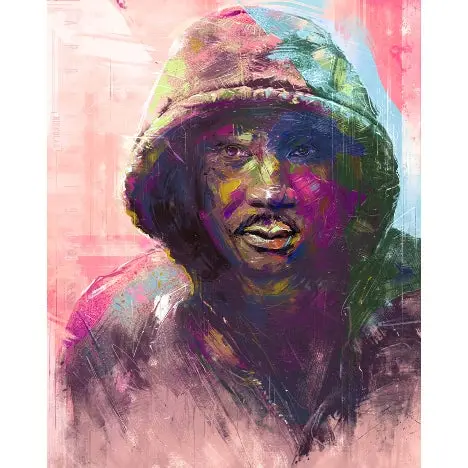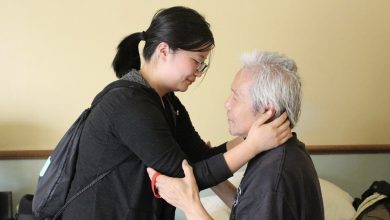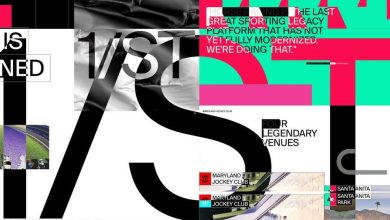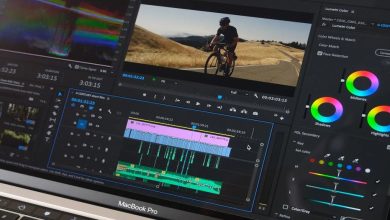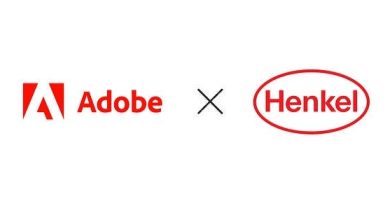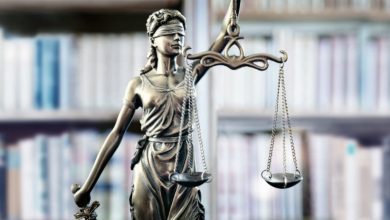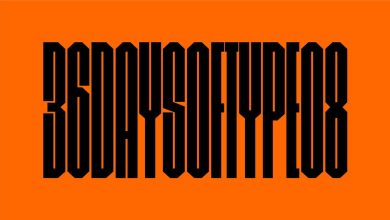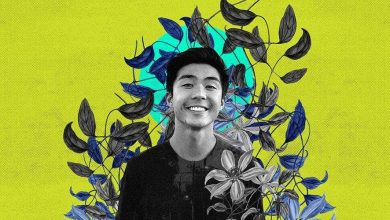How Nikkolas Smith blends creativity and activism for change
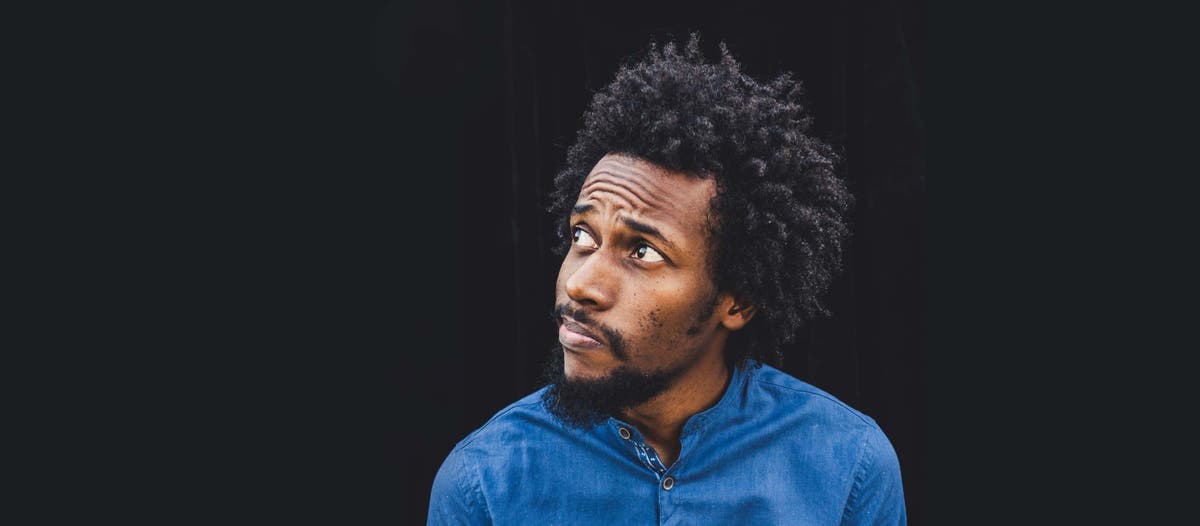
Photograph of digital artist and activist, Nikkolas Smith.
We can all picture Dr. Martin Luther King, Jr. on the steps of the Lincoln Memorial — fervently pointing to crowds of people surrounding the reflecting pool as he shared his ideas, beliefs, and intentions around equality and freedom. This pivotal moment sowed seeds of hope in the young and old for many generations to come. Today, Dr. King is a transformational, loving symbol of freedom but at the time he was held in contempt by those who fought his ideals of equality for all.
During his lifetime, Dr. King’s humanity and truth were distorted. It took years — through photographs of public and private moments, videos of interviews and speeches, and his own writing — to shine light on the incomparable human and activist he was.
Fast forward to 45 years after Dr. King’s assassination. The murder of 17-year-old Trayvon Martin becomes national news. Barack Obama, the first African American President of the United States, personally addresses the nation, saying “…Trayvon Martin could have been me 35 years ago.” A burdensome reality that most Black Americans somberly reflect on with each and every new injustice.
Both Dr. King and Trayvon’s images spark emotion and call attention to the legacy of racism that still exists today. Through artivism – a combination of the words ‘art’ and ‘activism’ — like the powerful work by Nikkolas Smith-we can continue to share their stories and carry the torch that will light the way to lasting change.”
Let’s go behind the scenes with Nikkolas Smith to understand his artivism journey and how this impactful piece of Dr. King evoking Trayvon Martin came to be.
Nikkolas, how do you define artivism?
I define artivism as using art as a tool to inspire people to make a positive change in the world. It’s like Nina Simone’s quote that it’s an artist’s duty to reflect the times, always pulling from what’s happening in the world and holding up a mirror to ourselves to say: this is what’s going on. It’s about trying to visually capture people’s attention to motivate them to fix what’s wrong.
Was there a moment that you remember considering yourself an activist?
That would probably be the moment seven years ago when I created the Martin Luther King Jr. in the hoodie sketch. At that point, it was just a Photoshop collage that I made. Being on CNN and on live TV, trying to explain the purpose of the message regarding Dr. King’s dream of not wanting anybody to be judged for their outward appearance, being able to have the art right there, and also to be influencing people and hopefully inspiring people — I think that was probably the moment that I would consider myself an activist or an Artivist.
Let’s walk through the MLK piece. Can you take us through it step by step?
I’ll start with the Photoshop version of it, which was just a very simple collage. First, I found a photo of Martin Luther King Jr. that I felt like I could give it a serious tone, and might create the effect that I wanted. It kind of turned into this social experiment where you look at this image of MLK in the hoodie, and the question is: do you see him as more threatening now? Do you see him as a ‘thug’ now? The expression on his face in the photo that I chose felt like it was perfect.
Then I found a hoodie that resembled Trayvon’s and mashed the two images together. I wanted it to feel like an older photo from the 1960s, so I weathered it a bit, added some texture on top of it so it gave you the feel that you’re actually standing in front of MLK in real life, and he has a hoodie on. That was pretty much it — it was one of the most simple pieces that I’ve ever created.
A few years later, I decided to create my Sunday Sketch painted version of it. So for that, I got into my semi-abstract painter mindset. These are the digital paintings that I create most often, but I wanted it to feel like I was standing in front of the canvas just throwing paint at it.
It’s pretty bright and expressive, and there’s a lot of different colors: pinks and blues and yellows and greens. It’s just very aggressive and passionate and loud. I used my typical process of speed painting that I do in my class. I’m sure I took a little extra time on this one, but it was just recreating that image of MLK in the hoodie, and adding all these different brush strokes to give it that feel of motion.
“It kind of turned into this social experiment where you look at this image of MLK in the hoodie, and the question is: do you see him as more threatening now?”
What was the response like to the piece?
It was one of my most shared art pieces ever. I was just glad that it really helped be that talking point. It was one of those things where you had to stop and take a second look when you saw it. It helped be that conversation starter about what it means to judge a book by its cover.
How is creativity a unique tool in creating conversations around change?
A thing I love about visual art is that it captivates hearts and minds in one single image. People are scrolling so fast and doing so many things and going 100 miles an hour, but there’s something about a striking image that will get people to stop. People will rally around an image, and, especially during times of protest and unrest, it can be something that people gravitate to. I just love that.
When we see something that is creatively crafted, especially something that speaks to injustice, it seems like it has even more potency and motivates people to make a change or to right a wrong.
That’s the thing that takes artivism beyond just art for fun and entertainment. I encourage artists out there who have dedicated their lives to figuring out how to visually draw people in, to take the next step and use that ability and combine it with a very important issue or something that needs to be fixed. When you do that, you’ll have the opportunity to really connect with people on a deeper level.
There’s some things I just can’t put into words. You have to experience them or see them. There’s just something with art that in a split second, it can get you to see an issue and understand why it’s so important, and motivate you to change. All in one second.
Dive deeper into Artivism with Nikkolas
Discover how to bring your creative voice to rise to the forefront of revolutionary conversations on community, society, and justice with Nikkolas’s classes on Skillshare. Join Nikkolas and Skillshare on October 26th at 12:30pm PDT at Adobe MAX to explore the world of Artivism in an eye-opening talk on the transformative power of art and driving change from the digital world to the real world.
This post was originally published as a part of Skillshare’s Creativity with Purpose Toolkit and has been edited for length and clarity.
This is a sponsored post for Adobe MAX — by Skillshare
Source : Adobe

